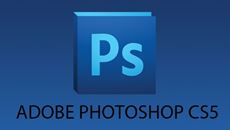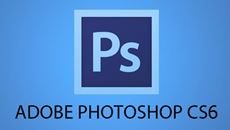- Delivery Method Online
- Professional Certificate
- 24hrs Suggested Study Time
- 3 Months Access
- Tutor Support
- Study On Any Device
- 3152 Students
Photoshop CS6 Fundamentals

Learn how to use Photoshop CS6, the world's best graphics program for photographers, to edit photos and create original images.
Photoshop is the world's best-known photo-editing program. Artists, photographers, designers, and hobbyists all rely on Adobe Photoshop for image creation and editing. Discover the fastest and most effective ways to use Photoshop from an expert and former columnist for Photoshop User magazine.
You'll learn how to use Photoshop with detailed, step-by-step instructions that you'll have no trouble following—even if you've never used a computer graphics program before! And you'll have a lot of fun doing it.
Photoshop CS6 has a host of impressive new features for photographers, and you'll encounter a number of them. We'll begin with an introduction to the Photoshop environment. Next, you'll learn techniques for creating simple digital paintings (including some brushes that let you create the look of an oil painting from a photo).
Then you'll be editing your own photographs to get rid of dust and scratches, fix the color, and correct image exposure. You'll master techniques for switching the backgrounds on images and removing wrinkles and blemishes from photos, just like they do in magazines. You'll also learn about the new content-aware Move tool in CS6 that, like magic, lets you move something on an image while intelligently replacing the ""hole"" left behind.
By the time you finish this fun, hands-on, project-oriented course, you'll be well on your way to expressing yourself with the most exciting graphics program ever developed.
Courses are delivered to you through expertly executed lessons, online instruction and interaction with like-minded students. Our courses are designed to deliver all of the benefits of studying in a classroom whilst giving you the flexibility to study at a time and place to suit your needs. You can access your classroom 24/7 from any device with an internet connection.
This course has a 3 month duration. You'll complete comprehensive lessons, quizzes and assignments before submitting your final exam at the end of the course to achieve your certificate. Courses must be completed within the 3 month access period.

Sherry London
Sherry London is a noted Photoshop and Illustrator expert, an artist, a writer, and a teacher. Her fiber art has been featured in magazines and exhibitions. Her published works include Photoshop CS2 Gone Wild, Photoshop Magic, Photoshop Effects Ma... Read more
Read Sherry London's ProfileFrequently Asked Questions
What people are saying about our courses
The Learning Environment
From the moment that you enrol in the Photoshop CS6 Fundamentals you will become an integral part of our learning community. You'll find yourself with the freedom to learn at a speed that suits you, on any device, from anywhere in the world. Achieving your career goals no longer has to mean compromising family and work commitments.
Our Values
Learn At Your Own Pace
We believe in personalised learning. That's why we provide all the tools and support you need to succeed at your own pace. With flexible learning, you'll stay motivated and retain more information. Plus, you can balance your studies with work and family commitments to make your dreams a reality.
We Won't Break The Bank
Education should be accessible to anyone who wants to learn. That's why we offer some of the most competitive prices in the industry with payments plans for just $25 per week. Investing in your future is a smart choice and doesn’t have to break the bank.
Industry-Led Courses
There's no better way to learn than from experts with years of experience in your field. That's why each of our 200+ industry-led courses are designed to give you a real-life perspective on your industry. With our expert mentors, you'll learn from people who have a wealth of knowledge and experience, and who are passionate about sharing it with you.
Get The Personal Support You Deserve
At Vibe Learning, we're real people who are dedicated to providing you with personal support every step of the way. Our industry experts are not only professional and knowledgeable but also incredibly passionate about sharing their expertise with you. With their guidance, you'll gain invaluable insights and practical knowledge to help you succeed.
Still looking?
Check out the following courses related to Photoshop CS6 Fundamentals:




